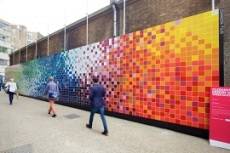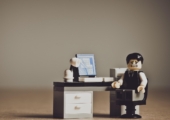November 18, 2014
The leap in workplace ill health is down to mobile devices and flexible working
 According to latest HSE statistics, the UK has seen a huge jump in the number of cases of workplace musculoskeletal disorders over the last two years. The data makes for depressing reading and includes a 20 percent hike in the number of cases to more than half a million, 8.3 million lost working days and a sharp increase in the proportion of work-related illness associated with the condition. Of the 535,000 new illnesses reported in the UK in 2013/14, over a third were musculoskeletal disorders; 184,000 cases. All of which begs the question what exactly is going on to cause this leap. Anecdotally we are aware of a number of factors that might indicate the smoking gun. The first is that clients are talking to us more and more about upper limb disorders rather than those related to the lower back. Pains and illnesses in the lower back are commonly (but not always) associated with poor posture while working at a desktop PC, injuries and aches to the wrists, arms, neck and shoulders are more commonly seen in people with handheld devices especially smartphones and tablets.
According to latest HSE statistics, the UK has seen a huge jump in the number of cases of workplace musculoskeletal disorders over the last two years. The data makes for depressing reading and includes a 20 percent hike in the number of cases to more than half a million, 8.3 million lost working days and a sharp increase in the proportion of work-related illness associated with the condition. Of the 535,000 new illnesses reported in the UK in 2013/14, over a third were musculoskeletal disorders; 184,000 cases. All of which begs the question what exactly is going on to cause this leap. Anecdotally we are aware of a number of factors that might indicate the smoking gun. The first is that clients are talking to us more and more about upper limb disorders rather than those related to the lower back. Pains and illnesses in the lower back are commonly (but not always) associated with poor posture while working at a desktop PC, injuries and aches to the wrists, arms, neck and shoulders are more commonly seen in people with handheld devices especially smartphones and tablets.






















November 19, 2014
Worktech 14 London focuses on wellbeing, wherever we choose to work
by Sara Bean • Comment, Events, Facilities management, Flexible working, Wellbeing
The variety of ways in which technology can help us thrive at work was one of the key themes of the first day of Worktech 14, which also provided yet more evidence that the workplace is no longer based in any one place. There were some interesting ruminations on the changing values of the workplace, which included the challenges of managing mobile working and its wider effects on our wellbeing; a topic that merited a whole series of sessions, including, how office design can aide brain function; analysing the psychological effects of the ‘always on’ culture and the role of the employer in combating the rise in western obesity. Meeting room no-shows run at around 35% for most companies and in an illuminating co-presentation on estates utilisation with Condeco, Bruce Everest of Vodafone described how the mobile giant has transformed its offices into collaborative space. There were also some thought provoking sessions that peered into the future, including the statement by a speaker from none other than Intel that ‘technology alone is not our salvation’ and a fascinating glimpse into the workplace of 2040 provided by Marie Puybaraud of Johnson Controls. (more…)